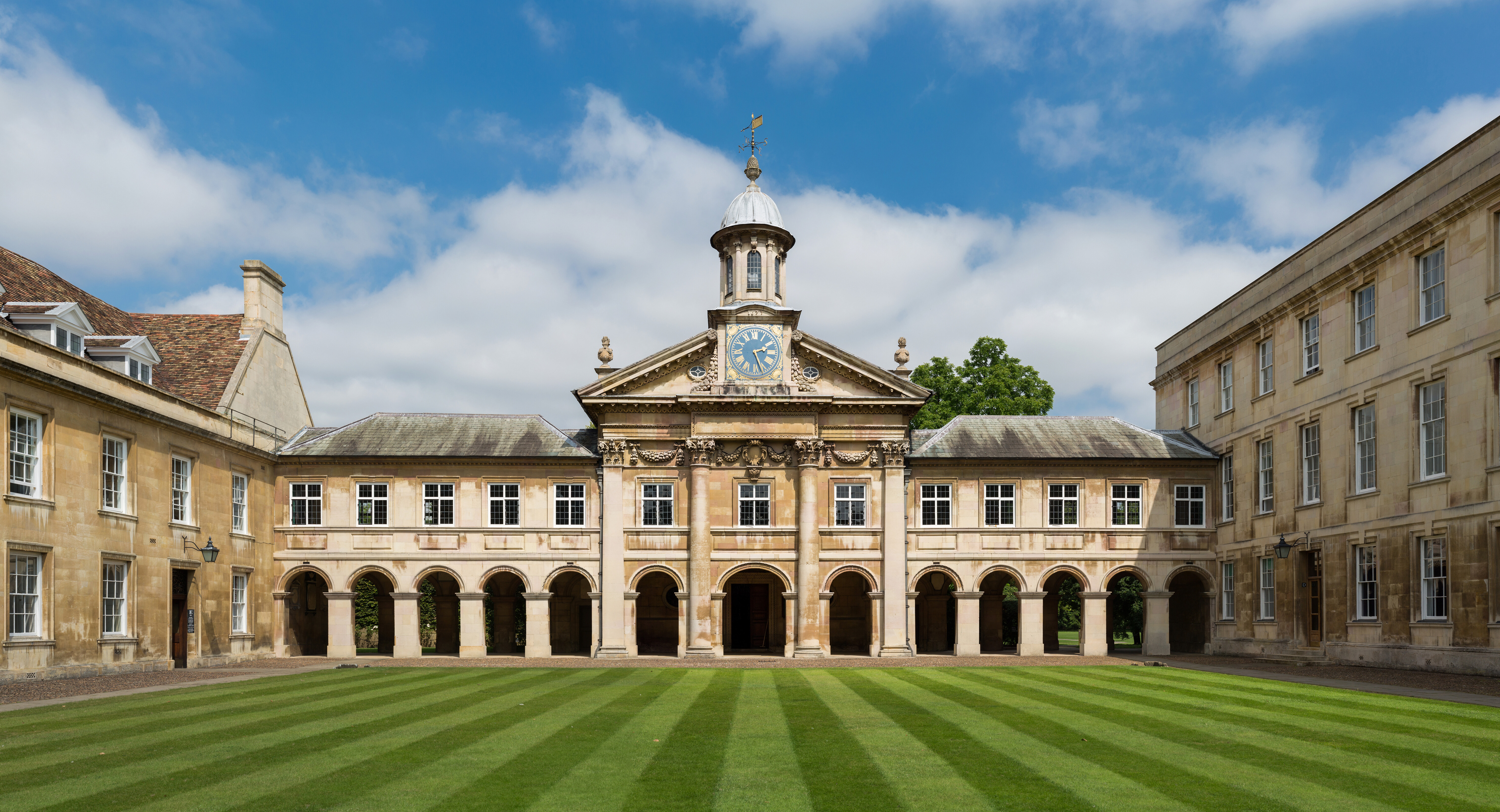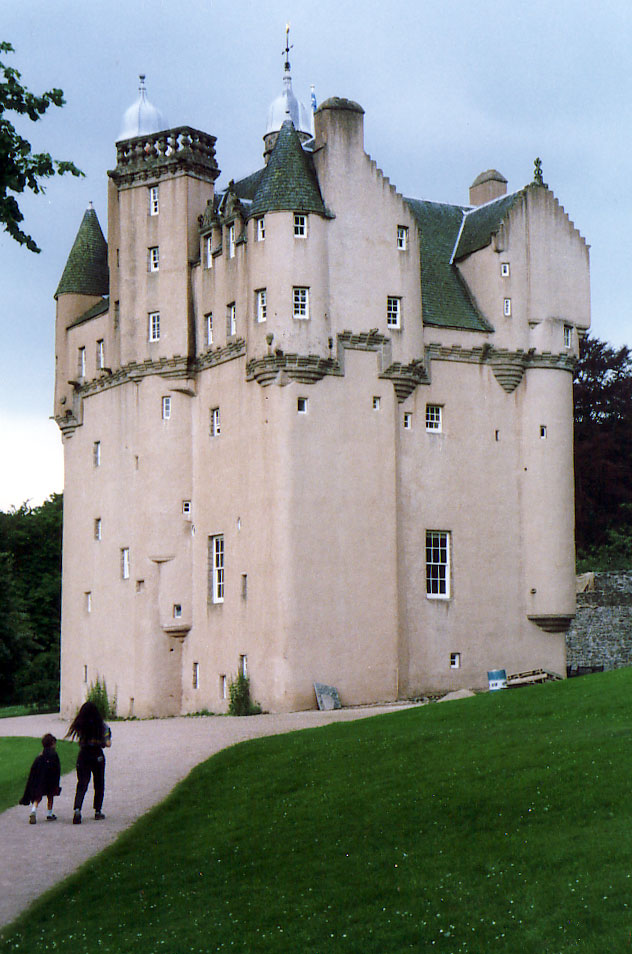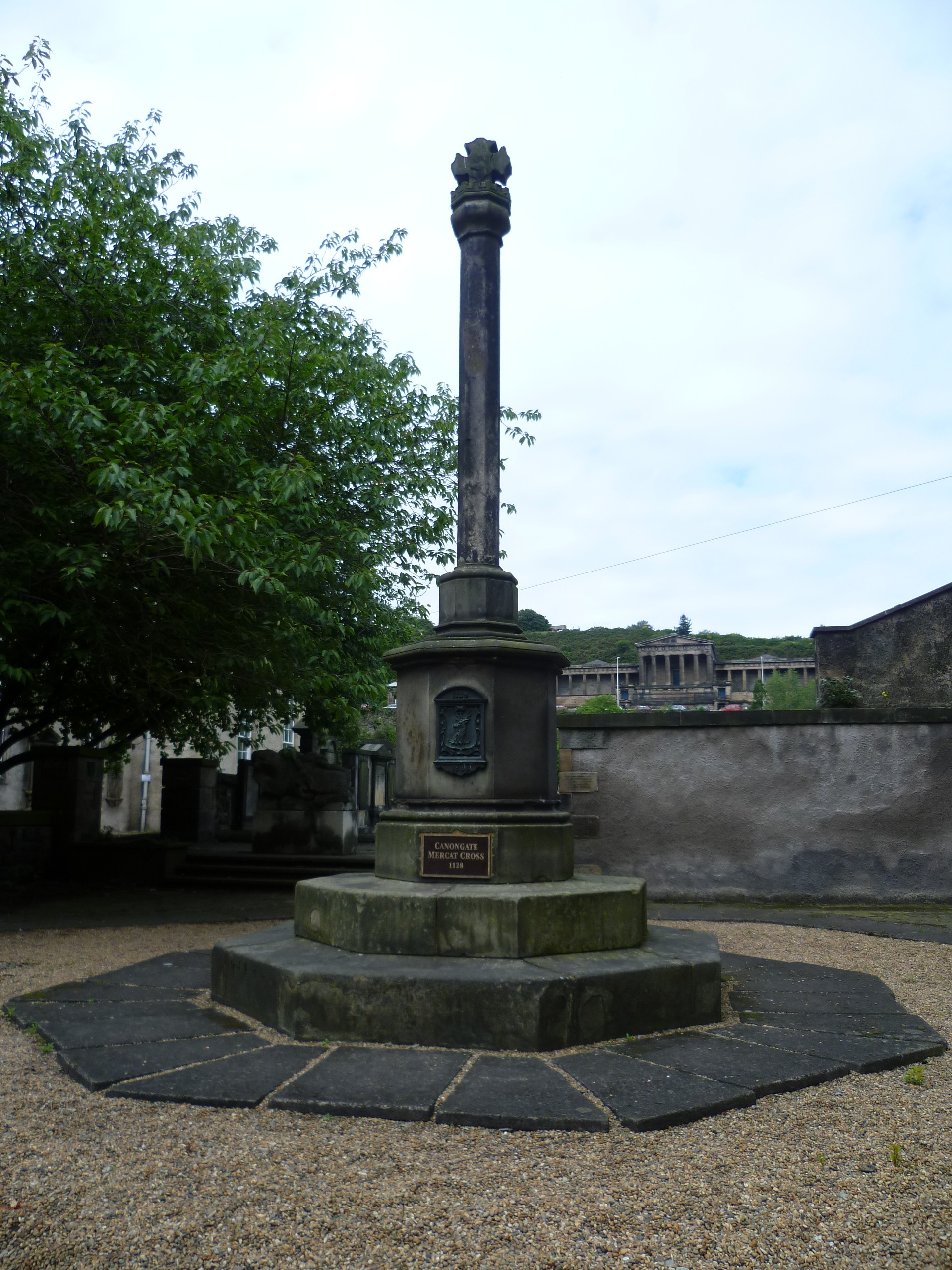|
Robert Hurd (civil Servant)
Robert Philip Andrew Hurd (29 July 1905 – 17 September 1963) was an influential conservation architect. His original aim was to be an architectural author specialising in traditional forms. He came to Scotland in 1930 and worked at the Edinburgh College of Art for two years as assistant to the architect and planner Frank Mears. He was an early and highly respected conservation architect and wrote and broadcast on Scottish architecture, planning and reconstruction. Life Hurd was of Anglo-Scottish parentage, the son of Sir Percy Angler Hurd MP and Hannah Swan Cox. He suffered from polio in early life and walked his whole life with a limp. He was educated at Marlborough College and then the LCC Central School of Arts. Thereafter he studied at Emmanuel College, Cambridge, becoming a close friend of Raymond McGrath and Mansfield Forbes. He had developed a love of Scotland during childhood holidays with his grandparents in Dundee and on student walking holidays in the Highla ... [...More Info...] [...Related Items...] OR: [Wikipedia] [Google] [Baidu] |
University Of Cambridge
, mottoeng = Literal: From here, light and sacred draughts. Non literal: From this place, we gain enlightenment and precious knowledge. , established = , other_name = The Chancellor, Masters and Scholars of the University of Cambridge , type = Public research university , endowment = £7.121 billion (including colleges) , budget = £2.308 billion (excluding colleges) , chancellor = The Lord Sainsbury of Turville , vice_chancellor = Anthony Freeling , students = 24,450 (2020) , undergrad = 12,850 (2020) , postgrad = 11,600 (2020) , city = Cambridge , country = England , campus_type = , sporting_affiliations = The Sporting Blue , colours = Cambridge Blue , website = , logo = University of Cambridge log ... [...More Info...] [...Related Items...] OR: [Wikipedia] [Google] [Baidu] |
National Trust For Scotland
The National Trust for Scotland for Places of Historic Interest or Natural Beauty, commonly known as the National Trust for Scotland ( gd, Urras Nàiseanta na h-Alba), is a Scottish conservation organisation. It is the largest membership organisation in Scotland and describes itself as "the conservation charity that protects and promotes Scotland's natural and cultural heritage for present and future generations to enjoy". The Trust owns and manages around 130 properties and of land, including castles, ancient small dwellings, historic sites, gardens, coastline, mountains and countryside. It is similar in function to the National Trust, which covers England, Wales, and Northern Ireland, and to other national trusts worldwide. History The Trust was established in 1931 following discussions held in the smoking room of Pollok House (now a Trust property). The Trust was incorporated on 1 May 1931, with John Stewart-Murray, 8th Duke of Atholl being elected as its first preside ... [...More Info...] [...Related Items...] OR: [Wikipedia] [Google] [Baidu] |
Canongate Kirkyard
The Canongate Kirkyard ( en, Churchyard) stands around Canongate Kirk on the Royal Mile in Edinburgh, Scotland. The churchyard was used for burials from the late 1680s until the mid-20th century. The most celebrated burials at the kirkyard are the economist Adam Smith and the poet Robert Fergusson, but many other notable people were interred in the cemetery. It has been claimed that David Rizzio, the murdered private secretary of Mary, Queen of Scots, lies here, although it is highly unlikely that an Italian Catholic would be reinterred in a Protestant graveyard 120 years after his death. History The Canongate was, until the 19th century, a separate parish from Edinburgh. This separate parish was formerly served by Holyrood Abbey at the foot of the Royal Mile, and Lady Yester's Church on High School Wynd. In 1687 King James VII adopted the abbey church as a Royal Chapel, and the general population worshipped in Lady Yester's Kirk (built in 1647) until 1691. Both of these ... [...More Info...] [...Related Items...] OR: [Wikipedia] [Google] [Baidu] |
Ian Begg (architect)
Ian McKerron Begg (23 June 192526 November 2017) was a Scottish architect, known for his work with Scottish castles and their restoration. He attended the Edinburgh College of Art and he served in World War II; he trained with the United States Navy to become a pilot in the Royal Navy's Fleet Air Arm. Begg led the restoration of many castles including Muckrach Castle. He also built his own tower house castle which was completed in 1992. He named the tower house "Ravens' Craig" and it is four storeys tall. He has served as an adviser for the National Trust for Scotland and vice president of the Architectural Heritage Society of Scotland. Early life Begg was born in Kirkcaldy, Scotland on 23 June 1925. He went to Kirkcaldy High School and then Edinburgh College of Art. He served in the Second World War, having spent one year at Glasgow University Naval Division, before training with the United States Navy to become a pilot in the Fleet Air Arm. When he was 22, he completed a ... [...More Info...] [...Related Items...] OR: [Wikipedia] [Google] [Baidu] |
Canongate
The Canongate is a street and associated district in central Edinburgh, the capital city of Scotland. The street forms the main eastern length of the Royal Mile while the district is the main eastern section of Edinburgh's Old Town. It began when David I of Scotland, by the Great Charter of Holyrood Abbey c.1143, authorised the Abbey to found a burgh separate from Edinburgh between the Abbey and Edinburgh. The burgh of Canongate that developed was controlled by the Abbey until the Scottish Reformation when it came under secular control. In 1636 the adjacent city of Edinburgh bought the feudal superiority of the Canongate but it remained a semi-autonomous burgh under its own administration of bailies chosen by Edinburgh magistrates, until its formal incorporation into the city in 1856. The burgh gained its name from the route that the canons of Holyrood Abbey took to Edinburgh—the canons' way or the canons' gait, from the Scots word ''gait'' meaning "way". In more modern tim ... [...More Info...] [...Related Items...] OR: [Wikipedia] [Google] [Baidu] |
Old Aberdeen
Old Aberdeen is part of the city of Aberdeen in Scotland. Old Aberdeen was originally a separate burgh, which was erected into a burgh of barony on 26 December 1489. It was incorporated into adjacent Aberdeen by Act of Parliament in 1891. It retains the status of a community council area. The town's motto is ''"concordia res parvae crescunt"'' ("through harmony, small things increase"). Location To the north of Aberdeen city centre, Old Aberdeen was for a long time fairly isolated at the edge of the city, being followed to the north by the River Don, Seaton Park and the small Brig o' Balgownie hamlet. Since the 1960s, and the North Sea oil boom of the 1970s, however, housing development has surrounded the area, in particular with the nearby Tillydrone development. History Old Aberdeen was an important political, ecclesiastical and cultural centre since the Late Middle Ages. In the 1630s the Covenanters challenged the Doctors of Aberdeen by holding a meeting in Mu ... [...More Info...] [...Related Items...] OR: [Wikipedia] [Google] [Baidu] |
Hamilton House, East Lothian
Hamilton House, also known as Magdalen's House, is a 17th-century "Laird's House" in the town of Prestonpans in East Lothian, Scotland. It is an exemplar of this type of architecture and has retained its crow-stepped gables and corner towers. It is owned by the National Trust for Scotland and is a Category A Listed Building. History The house was built in 1626 as a replacement for Preston Tower for Sir John Hamilton, Lord Magdalens, who was a Senator of the College of Justice and the brother of the 1st Earl of Haddington. The property was vacated by the Hamiltons in the 1740s, and in the 19th century it was converted into a barracks and later used as a tavern. Around 1880 the Hislop family are recorded as being the owners of the building. Eventually the building fell into dereliction and was about to be demolished when it was sold to The National Trust of Scotland in 1937 and the NTS restored it as a private residence. It is now a Category A Listed Building. Location Hamilton Hou ... [...More Info...] [...Related Items...] OR: [Wikipedia] [Google] [Baidu] |
Leith, Scotland
Leith (; gd, Lìte) is a port area in the north of the city of Edinburgh, Scotland, founded at the mouth of the Water of Leith. In 2021, it was ranked by '' Time Out'' as one of the top five neighbourhoods to live in the world. The earliest surviving historical references are in the royal charter authorising the construction of Holyrood Abbey in 1128 in which it is termed ''Inverlet'' (Inverleith). After centuries of control by Edinburgh, Leith was made a separate burgh in 1833 only to be merged into Edinburgh in 1920. Leith is located on the southern coast of the Firth of Forth and lies within the City of Edinburgh Council area; since 2007 it has formed one of 17 multi-member wards of the city. History As the major port serving Edinburgh, Leith has seen many significant events in Scottish history. First settlement The earliest evidence of settlement in Leith comes from several archaeological digs undertaken in The Shore area in the late 20th century. Amongst the finds ... [...More Info...] [...Related Items...] OR: [Wikipedia] [Google] [Baidu] |
Robert Hurd's Rebuilding Of Canongate, Edinburgh
The name Robert is an ancient Germanic given name, from Proto-Germanic "fame" and "bright" (''Hrōþiberhtaz''). Compare Old Dutch ''Robrecht'' and Old High German ''Hrodebert'' (a compound of '' Hruod'' ( non, Hróðr) "fame, glory, honour, praise, renown" and ''berht'' "bright, light, shining"). It is the second most frequently used given name of ancient Germanic origin. It is also in use as a surname. Another commonly used form of the name is Rupert. After becoming widely used in Continental Europe it entered England in its Old French form ''Robert'', where an Old English cognate form (''Hrēodbēorht'', ''Hrodberht'', ''Hrēodbēorð'', ''Hrœdbœrð'', ''Hrœdberð'', ''Hrōðberχtŕ'') had existed before the Norman Conquest. The feminine version is Roberta. The Italian, Portuguese, and Spanish form is Roberto. Robert is also a common name in many Germanic languages, including English, German, Dutch, Norwegian, Swedish, Scots, Danish, and Icelandic. It can be use ... [...More Info...] [...Related Items...] OR: [Wikipedia] [Google] [Baidu] |
Edinburgh Film Guild
The Edinburgh Film Guild (EFG) is a film society based in Edinburgh, Scotland. Founded in 1929, it is notable as the oldest continuously running film society in the world. Summary The Edinburgh Film Guild is a community organization dedicated to promoting and showcasing independent and international films. The guild has a long history of organizing film festivals, screenings, and educational events, and has played a vital role in bringing cinema of all genres to the people of Edinburgh and the surrounding area. Over the years, the Film Guild has adapted and evolved, always striving to bring the best in film to its members and the community. Today, the guild offers a wide range of programming, including film screenings, and educational events. The EFG screens films at several venues including the French Institute for Scotland. The Guild attracts film enthusiasts who are interested in independent and international films, and who are looking for a community of like-minded individuals ... [...More Info...] [...Related Items...] OR: [Wikipedia] [Google] [Baidu] |
Edinburgh International Festival
The Edinburgh International Festival is an annual arts festival in Edinburgh, Scotland, spread over the final three weeks in August. Notable figures from the international world of music (especially classical music) and the performing arts are invited to join the festival. Visual art exhibitions, talks and workshops are also hosted. The first 'International Festival of Music and Drama' took place between 22 August and 11 September 1947. Under the first festival director, the distinguished Austrian-born impresario Rudolf Bing, it had a broadly-based programme, covering orchestral, choral and chamber music, Lieder and song, opera, ballet, drama, film, and Scottish 'piping and dancing' on the Esplanade of Edinburgh Castle, a structure that was followed in subsequent years. The Festival has taken place every year since 1947, except for 2020 when it was cancelled due to the COVID-19 Pandemic. A scaled-back version of the festival was held in 2021. Festival directors *1947–194 ... [...More Info...] [...Related Items...] OR: [Wikipedia] [Google] [Baidu] |
Saltire Society
The Saltire Society is a membership organisation which aims to promote the understanding of the culture and heritage of Scotland. Founded in 1936, the society was "set up to promote and celebrate the uniqueness of Scottish culture and Scotland’s heritage, and to reclaim Scotland’s place as a distinct contributor to European and international culture." The society organises lectures and publishes pamphlets, and presents a series of awards in the fields of art, architecture, literature and history. The society is based in Edinburgh, with branches in Aberdeen, Dumfries, Glasgow, Helensburgh, the Highlands, Kirriemuir and New York City. The current president is the Principal and Vice-Chancellor of the University of St Andrews, Sally Mapstone. History The society was founded on 22 April 1936 in Glasgow, conceived by Andrew Dewar Gibb and George Malcolm Thomson. Subscription for a year cost five shillings. By the early 1950s the society had almost 2000 members. In 1954 they lau ... [...More Info...] [...Related Items...] OR: [Wikipedia] [Google] [Baidu] |





